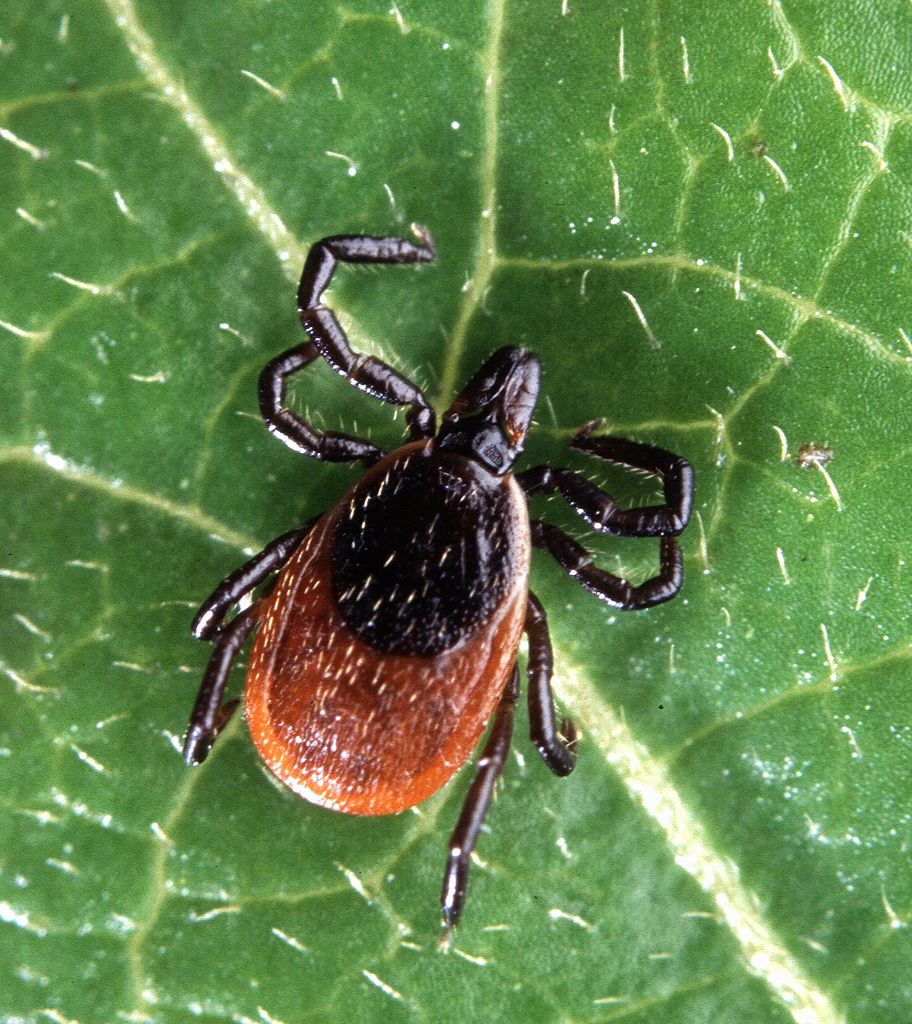Home » Health and Wellness » Lyme Disease

An adult deer tick. Image by the Agricultural Research Service via Wiki Commons.
Lyme disease is a tick-borne illness that is an epidemic on the East End of Long Island. The disease is caused by bacteria called Borrelia burgdorferi that is transmitted through the bite of infected deer ticks, also known as blacklegged ticks. Deer ticks are often hard to spot, as adult ticks are about the size of a small apple seed, and young ticks, called nymphs, are even smaller, and measure only 2 millimeters long.
They prefer to live in wooded areas with tall grasses, and survive by latching on to deer, outdoor dogs or cats, or other warm blooded host animals to suck their blood in order to survive. When they attach themselves to humans, they often seek warm spots, such as the groin, armpits, and scalp, which make them even more difficult to find.
For Lyme disease to be transmitted to a human, the deer tick must be attached to the person for 36-48 hours, according to the Centers for Disease Control.
Symptoms of Lyme disease include:

A bulls-eye rash from a tick bite. Image by the CDC via Wiki Commons.
If you believe that you have been bitten by a deer tick and may have Lyme disease, visit your doctor and have blood tests done to determine if you indeed have Lyme.
Lyme can be treated with antibiotics, and CDC officials say that if treated with appropriate antibiotics during the early stages of the disease, patients can usually recover rapidly and completely. Unfortunately for others, Lyme disease can also remain dormant within the body.
According to the Empire State Lyme Disease Association, as many as 15 to 20 percent of Lyme patients suffer from persistent and chronic symptoms. Those who have lingering effects of the condition may be diagnosed with Post-treatment Lyme Disease Syndrome, which is also known as “chronic Lyme disease,” and include fatigue, pain, and joint and muscle aches that can last up to six months.
Fortunately, there are ways for you to protect yourself from contracting Lyme disease. The CDC recommends the following prevention measures:
For the latest news and updates on Lyme disease on Long Island, check below: